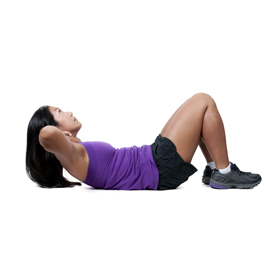 While it’s true that activities like weight lifting are linked to inguinal or lower-abdominal hernias, less than 10 percent of hernia sufferers actually experience such physical strain before a hernia is diagnosed. Though the abdominal pressure of heavy lifting can worsen existing hernias, it isn’t always the cause of the problem, and other exercises can actually be very useful in preventing hernias by improving your abdominal strength and flexibility.
While it’s true that activities like weight lifting are linked to inguinal or lower-abdominal hernias, less than 10 percent of hernia sufferers actually experience such physical strain before a hernia is diagnosed. Though the abdominal pressure of heavy lifting can worsen existing hernias, it isn’t always the cause of the problem, and other exercises can actually be very useful in preventing hernias by improving your abdominal strength and flexibility.
Still, it’s important not to push yourself too hard and risk injury, especially if you suffer from a particularly painful hernia or have recently had hernia surgery. Your general surgeon in Ft. Myers will be able to tell you if regular exercise is appropriate for you—deferring to his judgment will be the best way to stay safe.
Once your general surgeon says you’re ready to exercise, you can choose from many different workouts that will help you prevent future hernias or even control existing ones:
Aerobic Exercises
Low-impact activities are usually safe for those who suffer from hernias and doing them daily can promote the kind of whole-body strength needed for lifelong hernia prevention.
- Cycling. This activity will work your lower body without putting a lot of strain on the abdomen. You can try cycling outdoors or use an exercise bike.
- Swimming. The support of the water around you will helps to prevent injury and work your muscles harder, while the water pressure can even help control an existing hernia.
Abdominal Exercises
These will strengthen your abdominal wall to keep the intestines from bulging through a weak spot and causing a hernia. Because they may directly affect the area of a hernia, you should be extra careful when doing abdominal exercises and always follow your general surgeon’s instructions if told to wait. Most patients should hold off on abdominal exercises for at least a month after hernia surgery.
- Curls. Lie with your back and feet flat on the floor. Make sure your lower back and shoulder blades maintain contact with the floor throughout the exercise and use your stomach muscles to lift your head up. Curling too far may cause strain in the area of a hernia, so don’t overdo it. Start with five gentle reps and slowly work up to 15.
- Air bike. Because this activity will be a bit more strenuous, you should work on building up your abdominal strength with curls before trying it. Start in the same position as a curl, and then twist at the abdomen to move your left knee and right elbow towards one another and repeat the action on the opposite side. Continue alternating sides for about 12 reps or as many as you can do comfortably.
A good workout is one of the healthiest things you can give your body, so don’t let the fear of a hernia keep you from exercising. These activities can help you keep your body strong and free of hernias—just remember to ask your doctor or general surgeon’s advice before trying them or others.